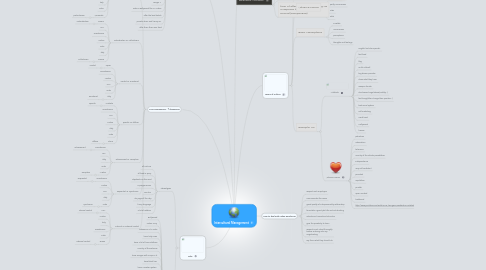
1. Fons Trompenaars - 7 dimensions
1.1. universalism vs. particularism
1.1.1. Swiss
1.1.1.1. universalism
1.1.2. Scandinavia
1.1.3. USA
1.1.4. Austria
1.1.5. Italy
1.1.6. India
1.1.7. Venezuela
1.1.7.1. particularism
1.2. individualism vs. collectivism
1.2.1. Russia
1.2.1.1. indivudualism
1.2.2. USA
1.2.3. Scandinavia
1.2.4. Austria
1.2.5. India
1.2.6. Italy
1.2.7. France
1.2.7.1. collectivism
1.3. neutral vs. emotional
1.3.1. Japan
1.3.1.1. neutral
1.3.2. Scandinavia
1.3.3. Austria
1.3.4. USA
1.3.5. India
1.3.6. Italy
1.3.6.1. emotional
1.4. specific vs. diffuse
1.4.1. Australia
1.4.1.1. specific
1.4.2. Scandinavia
1.4.3. USA
1.4.4. Austria
1.4.5. Italy
1.4.6. India
1.4.7. China
1.4.7.1. diffuse
1.5. achievement vs. ascription
1.5.1. Scandinavia
1.5.1.1. achievement
1.5.2. USA
1.5.3. Italy
1.5.4. India
1.5.5. Austria
1.5.5.1. ascription
1.6. sequential vs. synchronic
1.6.1. Scandinavia
1.6.1.1. sequential
1.6.2. Austria
1.6.3. USA
1.6.4. Italy
1.6.5. India
1.6.5.1. synchronic
1.7. internal vs. external control
1.7.1. USA
1.7.1.1. internal control
1.7.2. Austria
1.7.3. Italy
1.7.4. Scandinavia
1.7.5. India
1.7.6. Russia
1.7.6.1. external control
2. India
2.1. stereotypes
2.1.1. all eat rice
2.1.2. all food is spicy
2.1.3. elephants on the road
2.1.4. IT programmers
2.1.5. are slim
2.1.6. do yoga all the day
2.1.7. funny language
2.1.8. a lot of Rikshas
2.2. facts
2.2.1. Bollywood
2.2.2. Indian curry
2.2.3. outsource IT to India
2.2.4. have holy cows
2.2.5. have a lot of henna tattoos
2.2.6. country of the extreme
2.2.7. have Ganges with Corps in it
2.2.8. have black hair
2.2.9. have a Kasten system
2.2.10. have the Bindi
2.2.11. have arranged marriages
2.2.12. a lot of gods
2.2.13. woman wear Sari
2.2.14. bad working conditions but not everywhere
2.2.15. one religion is Hindu
2.2.16. wash in Ganghes
2.2.17. a lot of Gurus
2.2.18. problem with traffic
2.2.19. a lot of slums
3. Package for Indian Tourists
3.1. honeymoon travel package
3.2. Fiakker Tour through vienna
3.3. guided tour through vienna
3.4. promote the mountains and the fresh air
3.5. show the fresh water in austria
3.5.1. danube
3.5.2. lakes
3.6. every indian must see snow
3.7. Swarovsky shop tour
3.8. Sound of music tour
3.9. vegeterian food is important
3.10. Hangar 7
3.11. make a Bollywood film in Austria
3.12. offer the best hotels
3.13. private driver and luxury car
3.14. offer them their own food
4. Definition "Culture"
4.1. a pattern of shared basic assumptions (Edgar H. Schein)
4.2. collective programming of the mind distinguishing the members of one group or category of people from others (Hofstede)
4.3. form of effective problem-solving, as a response to the challenges of survival(Trompenaars)
5. Layers of Culture
5.1. Artifacts
5.1.1. visible
5.1.2. language
5.1.3. food
5.1.4. dress
5.1.5. mimic & gestic
5.2. Values & Norms
5.2.1. partly visible
5.2.2. partly unconscious
5.2.3. rules
5.2.4. idols
5.3. Basic Assumptions
5.3.1. Invisible
5.3.2. unconscious
5.3.3. perceptions
5.3.4. thoughts and feelings
5.4. Example: US
5.4.1. Artefacts
5.4.1.1. english, but also spanish,
5.4.1.2. fast food
5.4.1.3. flag
5.4.1.4. multi culturell
5.4.1.5. big shows, parades
5.4.1.6. show what they have
5.4.1.7. weapon fanatic
5.4.1.8. strict sexual regulations(nudility,..)
5.4.1.9. fast living(often change their quartier,..)
5.4.1.10. bad social system
5.4.1.11. self marketing
5.4.1.12. credit card
5.4.1.13. Hollywood
5.4.1.14. heroes
5.4.2. Values & Norms
5.4.2.1. patriotism
5.4.2.2. nationalism
5.4.2.3. tolerance
5.4.2.4. country of the infinite possibilities
5.4.2.5. independence
5.4.2.6. very self confident
5.4.2.7. proudish
5.4.2.8. capitallism
5.4.2.9. prudish
5.4.2.10. open minded
5.4.2.11. traditional
5.4.2.12. http://www.youtube.com/watch?v=RVtwCg56iWQ&feature=related
